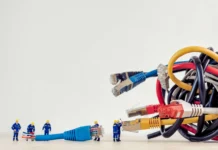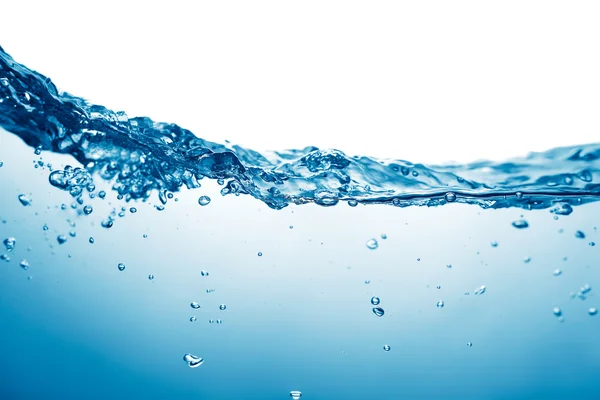The world as you know it largely revolves around water. It is an indispensable resource that forms the building block of life, but when uncontrolled, it can leave a trail of insurmountable devastation. This blog post explores the science behind water restoration, revealing the complex processes it encompasses and its importance in recovering from water damage.
The Importance of Water
Water is essential for getting through each day—from that first refreshing drink to the shower that leaves you feeling revived. Yet as the world population rises, water scarcity increasingly poses a global threat. This underscoring the vital role water restoration plays in ensuring adequate clean water supplies now and for future generations. Sustainable access to this precious resource affects all.
The process aids in conserving this precious resource by managing floods and leaks that waste tons of water every day. Being mindful of your water use and addressing water damage promptly not only helps your living conditions but also contributes towards worldwide conservation efforts.
Water Damage Causes
A myriad of circumstances can lead to water damage – nature’s fury in the form of floods, hurricanes, broken pipelines or leaky roofs are common culprits. Public buildings or households, no one is immune from these occasional accidents.
In most instances, immediate action is essential to prevent further destruction and many will go to Water Damage Specialist or another service straight away. However, getting rid of excess water isn’t sufficient because tiny pockets of hidden moisture can stimulate mold growth that poses various health risks. Hence, comprehensive water restoration becomes necessary.
Extent of Water Damage
The extent of water damage depends on various factors; the duration for which the situation has been left untreated being prime among them. Also, the quantity of standing water present and the type of materials impacted plays a role.
Certain materials like wood and drywall absorb water more readily and can suffer severe structural damage, which may be beyond repair in extreme cases. Hence, assessing the extent of damage accurately is a key step in strategizing the right restoration plan.
Aspects of Water Restoration
Water restoration is a multi-dimensional process involving various steps from initial assessment to decontamination and drying. The first step always involves a thorough analysis of the extent of damage, which essentially sets the stage for the subsequent actions.
Different levels of contamination also dictate the course of action for restoration. Clean water from broken pipes or appliance malfunctions is tackled differently than “black water” that contains harmful substances and originates from sewage leaks or flooding by natural disasters.
Methods of Drying
Drying methods apply science generously and are shapeshifters – changing in accordance with affected material type and level of wetness. Methods range from air drying for less severe cases to usage of specialized dehumidifiers or high velocity air movers for excessive water situations.
The aim is not only to get rid of apparent moisture but also to reach out deeper into materials to ensure complete drying. This curbs the potential for bacterial growth that can lead to health problems.
Detection of Hidden Moisture
Often, moisture hides within building materials and can go undetected, allowing mold, bacteria, and pests to propagate. Stagnant water trapped in offices and homes attracts unwanted insects and rodents. Detecting concealed moisture is crucial for successful water restoration and pest control.
Infrared cameras and moisture meters are effective tools used to locate hidden dampness. By carefully monitoring moisture levels in materials, restoration professionals can ensure complete dryness has been achieved before completing a job. Thorough drying also helps discourage future pest infestations. Careful moisture detection and remediation prevents further growth of mold, bacteria, and nuisance pests.
Mold and Mildew Issues
Mold and mildew manifest as health hazards post water damage. They thrive in high humidity environments and can multiply quickly if left unchecked. Removal of visible molds isn’t sufficient because their unseen spores exist in the air too.
Professional water restoration services equipped with specialized equipment work tirelessly to sanitize affected properties. This ensures that your health is not compromised while providing you with a safe, clean space to live or work in post-water damage.
Methods of Decontamination
Decontamination methods form a cornerstone of an effective water restoration plan. They include actions such as application of antimicrobial agents and sanitizers, which reduce the chances of illness due to infection.
Another process often used in the decontamination phase is air scrubbing. These devices purify the air by capturing minute particles and pollutants, improving indoor air quality and curtailing airborne pathogens like mold spores.
Water Restoration Safety
In the midst of undertaking water restoration plans, safety is paramount. It looks into protective measures for both the affected occupants and those engaged in executing restoration tasks.
Safety assurance emanates from equipment protection, like gloves and masks, to adhering to guidelines during equipment handling. This helps avoid any potential electrical mishaps or injuries from operating heavy-duty machinery like pumps or vacuums.
Latest Technologies in Restoration
Technological advances have transformed the field of water damage restoration. While tools like thermal imaging cameras were once only seen in espionage films, they now have far more constructive purposes. By detecting moisture hidden behind walls and under floors, thermal cameras guide restorers to problem areas. This prevents further structural degradation and mold growth by ensuring no water goes unseen. Partnered with high-powered dehumidifiers to swiftly dry flooded spaces, this technology makes the restoration process precise and efficient.
Though innovation always carries a potential for misuse and security risks, in restoration it has proven an invaluable ally. Moisture detection in particular helps restorers rapidly identify, reach and repair damage that once may have gone unnoticed until it was too late. When used properly, it protects people’s health and homes. The path forward is to support developing technology for ethical purposes, because as thermal imaging shows, its benefits can far outweigh its risks.
Novel Techniques
In addition to technological advancements, it’s vital to consider innovative techniques that are shaping up water restoration procedures. Cryogenic cleaning, an example of such a technique, uses dry ice blasting to remove molds. This method not only improves efficiency but also minimizes damage to the underlying surface.
Newly formulated biocide solutions offer more effective sanitization and disinfection, while lesser toxic impact on health and environment – an optimization much needed in this domain!
Regulations and Standards
Standards and regulations are instrumental in determining the quality of water restoration services. Different countries impose different sets of regulations aimed to ensure safety and effectiveness of restoration procedures.
Adherence to these offers dual advantages; professionals fulfill their ethical obligations while customers gain peace of mind knowing they’re getting the best possible service. Therefore, knowledge about prevalent standards aids in discerning the merits and demerits of a particular water restoration service.
Future of Water Restoration
The future of the water restoration field seems bright with rapid technological advancements and continuous methodological updates targeting better results. The focus is shifting towards sustainable processes that are high on efficiency but low on ecological footprint.
Development of energy-efficient equipment, biodegradable cleaning solutions, and digitized control systems reflect this new paradigm. Thus, one can expect this evolution to make the science of water restoration even more effective and earth-friendly in times to come.
The Takeaway
Understanding the science behind water restoration allows people to appreciate its importance in conserving an essential life resource – water. It’s crucial not just because it protects your health and infrastructure from unseen damage, but also because it promotes conscious waste reduction, ensuring a safe future for generations to come. Indeed, adopting effective water restoration practices today paves way for a sustainable tomorrow.



































